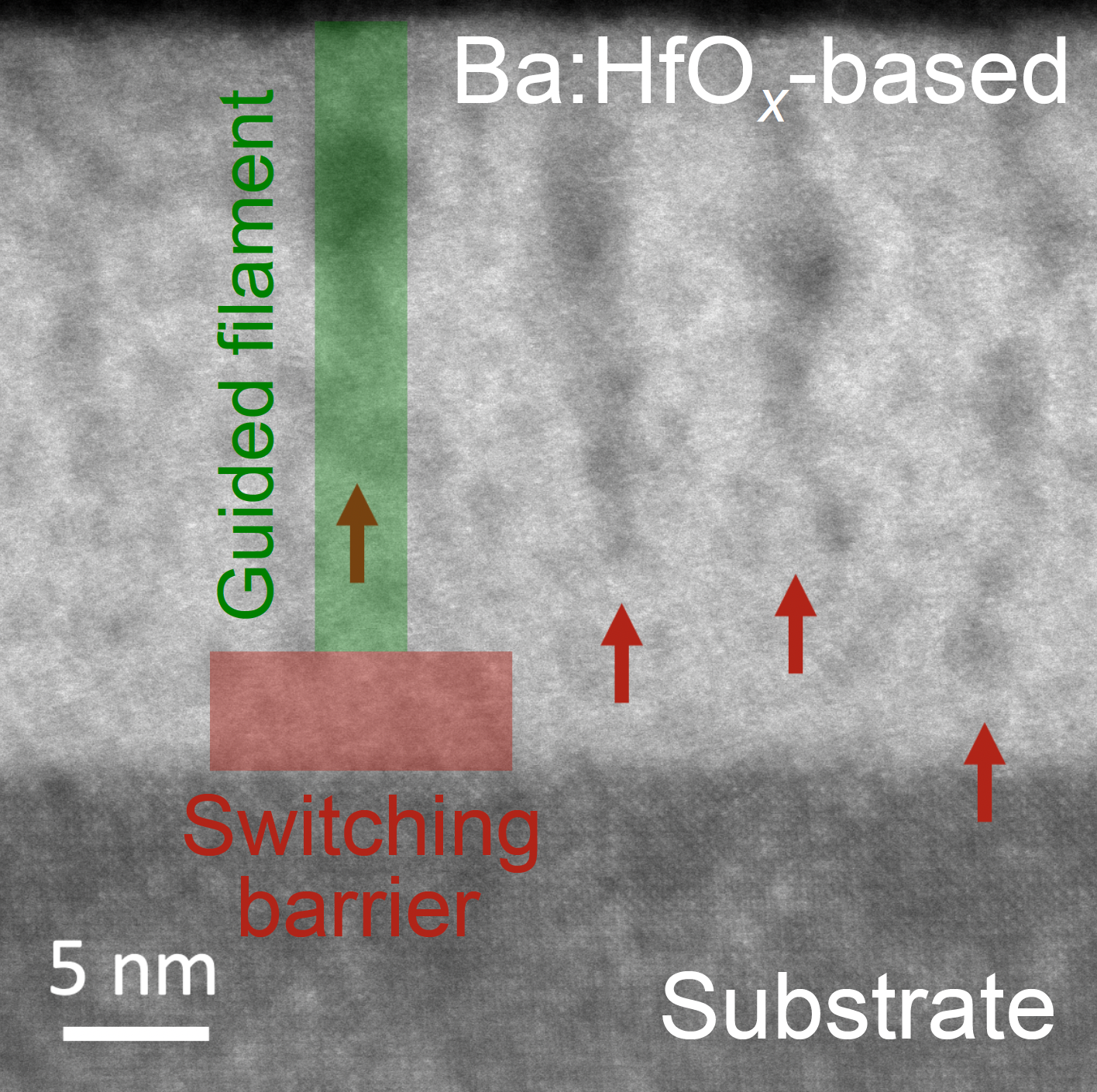Resistive Switching

In conventional memory, information is stored as charge on a capacitor or transistor gate. This entails volatility, i.e., information has to be refreshed continuously and is lost without power supply, or it required large amounts of energy to make it non-volatile. In resistive switching (RS), instead, charge is stored in the resistance of a device. This can be realised in very simple capacitor-like structures, but without using their capacitive, i.e., charge-based properties. Instead, the conductivity of the capacitor oxide can be controlled by applying suitable voltages. In the most common approach, the oxide is subjected repeatedly to a reversible dielectric breakdown by forming and rupturing a conductive filament in the otherwise insulating material. Depending on the size of the filament, different resistance states can be achieved. Very promising results have been achieved with this approach, but one of its main challenges is the inherent stochasticity of the atomic motion to form and rupture the filament. An alternative to such filamentary switching can be interfacial switching, where instead of by a filament, the resistance states are controlled by a tunable Schottky-like interface energy barrier. However, such systems typically exhibit limited state retention, i.e., they are not fully non-volatile.
At NeuCam, we have developed a novel materials system, which combines the two approaches to result in hybrid switching mechanisms. We achieved this with a composite materials system based on hafnium oxide, a material widely used in semiconductor industry, and engineered vertical phase-separated nanocolumns in amorphous thin films. Typically, phase separation and film orientation requires high deposition temperatures and crystalline films. With industry applications in mind, however, it is important to develop low-temperature processes and amorphous thin films, which is what we achieved. The nanocolumns in our thin films reach only about 2/3 through the films and guide the controlled, i.e., less stochastic, formation of partial filaments which act as the effective top electrodes of our devices. This restricts the switching to the interface and leads to increased switching uniformity and reproducibility. The results are published and available open access here and illustrated to the right. Alternatively, by manipulating the structure of the bottom electrode, we can tune to system to switch filamentary instead, without losing the uniformity due to the nanocolumns inside the films.
